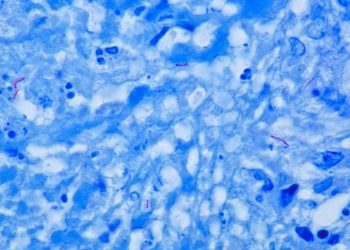No significant differences between medications for episodic migraine prophylaxis
1. In this systematic review and meta-analysis, there were no significant differences between various pharmacologic treatments for preventing episodic migraine in adults.
2. While calcitonin gene-related peptide antagonist monoclonal antibodies appeared to be more efficacious and tolerable than other drug classes, the evidence was of lower certainty.
Evidence Rating Level: 1 (Excellent)
Study Rundown: Many pharmacologic options exist for treating episodic migraine. Although it has been established that these treatments are effective compared with placebo, there is still a lack of research comparing these treatments with one another. This systematic review aimed to evaluate the relative effectiveness and harms of each treatment. In terms of migraine frequency, moderate- and low-certainty evidence demonstrated no significant differences between beta-blockers and valproate, between calcitonin gene-related peptide antagonist monoclonal antibodies (CGRP-mAbs) and gepants, or between amitriptyline and topiramate. Venlafaxine was associated with shorter headache duration compared with amitriptyline, but no significant difference in duration was found between the beta-blocker propranolol and valproate. The CGRP-mAb erenumab was associated with reduced acute medication intake days at higher dosages, but pairwise comparisons showed a lack of significant evidence that any drug class was more effective in this criterion than another. CGRP-mAbs were also associated with less migraine-related disability and an improvement in quality of life compared with gepants. CGRP-mAbs and beta-blockers were both associated with fewer treatment discontinuations compared with topiramate, while no differences were found in this regard between CGRP-mAbs and gepants or between angiotensin receptor blockers (ARBs) and beta-blockers. The generalizability of this study was limited by the lack of direct comparisons between treatments. Nevertheless, this study suggested that in general, no significant differences exist between pharmacologic treatments for preventing migraines.
Click to read the study in AIM
Relevant Reading: The comparative effectiveness of migraine preventive drugs: a systematic review and network meta-analysis
In-Depth [systematic review and meta-analysis]: This study aimed to compare the effectiveness and harms of various pharmacologic treatments for episodic migraine prevention in adults. A total of 61 studies were selected, yielding a population that was 84% female and had a median age of 41 years. Participants suffered from migraine headaches at a median of every 7.8 days, and 53% of participants had previously used migraine prevention treatments. In terms of headache frequency, no significant differences were found between beta-blockers and valproate (mean difference [MD], -0.19 migraine days per month [95% CI, -1.56 to 1.18]), between CGRP-mAbs and gepants (MD, -0.40 migraine days per month [95% CI, -1.67 to 0.87]), between amitriptyline and combination topiramate and amitriptyline (MD, -0.28 migraine days per month [95% CI, -1.45 to 0.90]), or between topiramate and combination topiramate and amitriptyline (MD, -0.07 migraine days per month [95% CI, -1.24 to 1.11]). Low-certainty evidence suggested that venlafaxine was associated with shorter headache durations compared with amitriptyline (MD, -6.11 hours [95% CI, -9.53 to -2.69]). Propranolol was not significantly associated with changes in headache duration compared with valproate (MD, -1.64 hours [95% CI, -3.68 to 0.40]). Low-certainty evidence suggested that CGRP-mAbs were associated with less migraine-related disability (MD, -4.12 points [95% CI, -9.30 to 1.05]) and improved quality of life in the role function-restrictive domain (MD, 2.25 points [95% CI, -0.85 to 5.34]) compared with gepants. Regarding harms, low-certainty evidence indicated that CGRP-mAbs (risk difference [RD], -16.2% [95% CI, -18.4% to -12.8%]) and propranolol (RD, -15.7% [95% CI, -19.0% to -10.1%]) may result in fewer discontinuations compared with topiramate. Risk of medication discontinuation was similar between CGRP-mAbs and gepants (RD, -0.9% [95% CI, -1.7% to 3.1%]), and between ARBs and beta-blockers (RD, -1.3% [95% CI, -2.5% to 5.1%]). Overall, this study showed a general lack of significant differences in efficacy or harms between various migraine prevention treatments.
Image: PD
©2025 2 Minute Medicine, Inc. All rights reserved. No works may be reproduced without expressed written consent from 2 Minute Medicine, Inc. Inquire about licensing here. No article should be construed as medical advice and is not intended as such by the authors or by 2 Minute Medicine, Inc.







